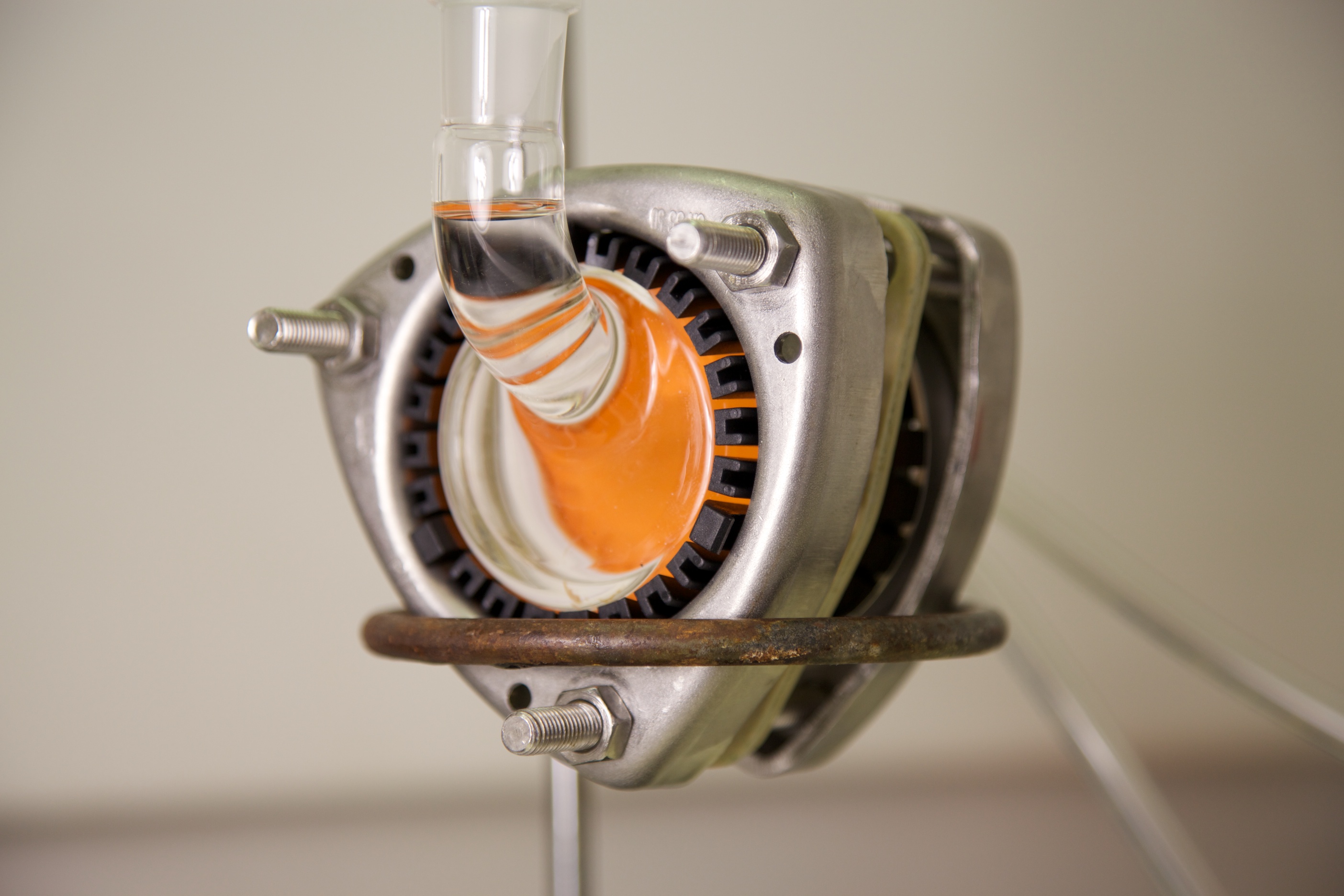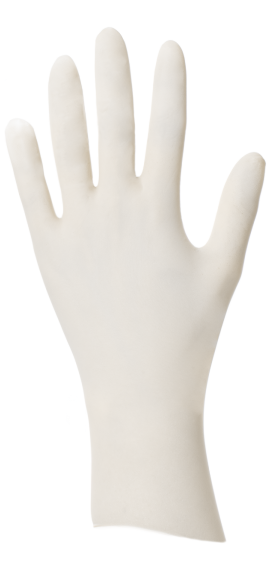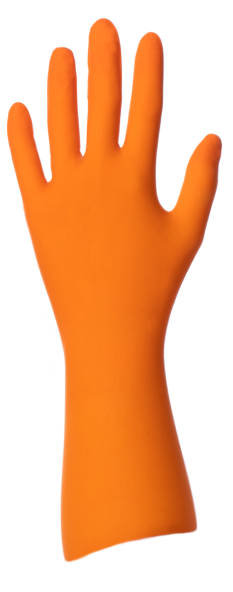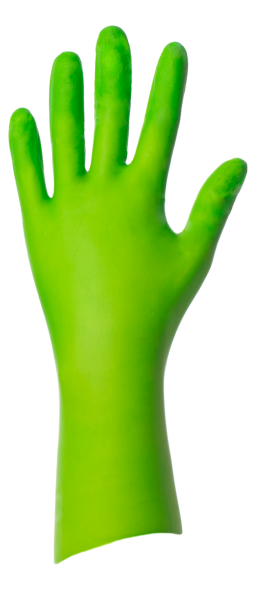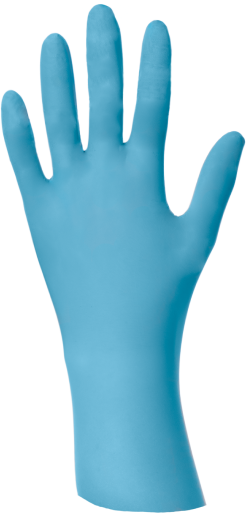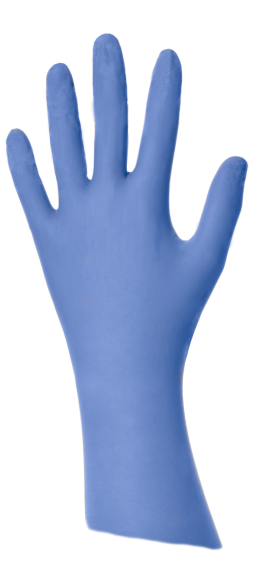Chemical resistance guide
ecoSHIELD™
Eco Nitrile PF 250
Styrene 99.9%
100-42-5
0 min
Acrylonitrile 99%
107-13-1
0 min
Phenol 0.1% solution
108-95-2
480 min
Phenol 50%
108-95-2
15 min
Diethylamine 99.5%
109-89-7
0 min
Tetrahydrofuran 99.9%
109-99-9
0 min
Cyclohexane
110-82-7
480 min
Pyridine
110-86-1
0 min
Ethidium bromide 5%
1239-45-8
480 min
Sodium Hydroxide 50%
1310-73-2
480 min
Sodium Hydroxide 40%
1310-73-2
DR 10% / 480 min
Xylene 98.5%
1330-20-7
2 min
Ammonium hydroxide 25%
1336-21-6
16 min
Ethyl acetate 99.8%
141-78-6
0 min
Formaldehyde 37%
50-00-0
DR 25% / 480 min
Ethanol 70%
64-17-5
31 min
Ethanol 99.8%
64-17-5
9 min
Formic acid 98.5%
64-18-6
0 min
Formic acid 97.8%
64-18-6
3 min
Methanol 20%
67-56-1
65 min
Methanol 99.9%
67-56-1
0 min
Isopropanol 70%
67-63-0
58 min
Isopropanol 100%
67-63-0
33 min
Acetone 99.8%
67-64-1
0 min
Chloroform 99.8%
67-66-3
0 min
Dimethyl sulfoxide 99% (DMSO)
67-68-5
10 min
Dimethyl formamide 99%
68-12-2
1 min
Butanol 99.4%
71-36-3
25 min
Acetonitrile 99.9%
75-05-8
0 min
Dichloromethane 99%
75-09-2
0 min
Carbon disulfide 99.9%
75-15-0
0 min
Hydrochloric acid 37%
7647-01-0
98 min
Phosphoric Acid 30%
7664-38-2
480 min
Hydrofluoric acid 40%
7664-39-3
8 min
Hydrofluoric acid 48%
7664-39-3
0 min
Nitric Acid 70%
7697-37-2
4 min
Nitric acid 65%
7697-37-2
6 min
Potassium permanganate 6.5%
7722-64-7
153 min
Hydrogen peroxide 30%
7722-84-1
DR 35% / 480 min
Isobutanol 99%
78-83-1
39 min
Acrylamide 40%
79-06-1
480 min
n-Hexane 95%
110-54-3
28 min
Potassium Hydroxide 40%
1310-58-3
480 min
Sodium Hypochlorite 13%
7681-52-9
480 min
Trifluoroacetic acid 99%
76-05-1
0 min
Hydrazine monohydrate 98%
7803-57-8
150 min
Tetramethylammonium hydroxide 2.5%
75-59-2
480 min
Butyl methacrylate 99.9%
97-88-1
10 min
Aniline 99.9%
62-53-3
10 min
Methylcyclohexane 99.9%
108-87-2
55 min
Sulphuric Acid 50%
7664-93-9
480 min
Sulphuric Acid 10%
7664-93-9
480 min
Sulphuric Acid 95%-98%
7664-93-9
0 min
Sodium acetate Sat. solution
127-09-3
480 min
Secondary isoamyl alcohol 98%
598-75-4
30 min
Tris (hydroxymethyl) aminomethane Sat. solution
77-86-1
480 min
Propylene oxide 99%
75-56-9
0 min
2-Mercaptoethanol 99%
60-24-2
1 min
Diethyl ether 99%
60-29-7
0 min
Acridine orange
10127-02-3
480 min
Formamide 99%
75-12-7
11 min
Mucocit®-T branded mixture
Mixed Solution
480 min
Bacillol 30 Foam
Mixed Solution
48 min
Bacillol AF
Mixed Solution
22 min
Hydranal ® -Composite 2
Mixed Solution
480 min
Terralin protect
Mixed Solution
13 min
Cycloheximide
66-81-9
480 min
Petroleum benzene 80-100°C
64742-49-0
480 min
Toluene diisocyanate 95%
584-84-9
0 min
n-Decane
124-18-5
58 min
Sulfamic Acid 15%
5329-14-6
480 min
n-Heptane 99%
142-82-5
DR 48% / 43 min
Acetic acid 99%
64-19-7
4 min
*DISCLAIMER: The data provided was based on gloves tested under laboratory conditions, in accordance with EN 16523-1:2015 (formerly EN 374-3:2003) and EN 374-4:2013. The information is for guidance only and may not reflect the user’s application. A risk assessment should always be made by purchaser to assess the suitability of gloves for a specific application.
Chemical resistance levels
SHIELD Scientific has developed one of the most comprehensive chemical resistance guides, to help users in their risk assessments for evaluating personal protection to chemical exposure.
The testing has been conducted by reputable testing laboratories (Respirex, Proqares & Centexbel), according to EN 16523-1:2015+A1:2018 (Determination of material resistance to permeation by chemicals – Part 1: permeation by liquid chemical under conditions of continuous contact). This standard supersedes EN 374-3:2003. However we would like to stress that all of our gloves are disposable thin gauge gloves designed for light chemical protection.
| Level 0 | < 10 minutes |
| Level 1 | 10 > 29 minutes |
| Level 2 | 30 > 59 minutes |
| Level 3 | 60 > 119 minutes |
| Level 4 | 120 > 239 minutes |
| Level 5 | 240 > 479 minutes |
| Level 6 | > 480 minutes |

